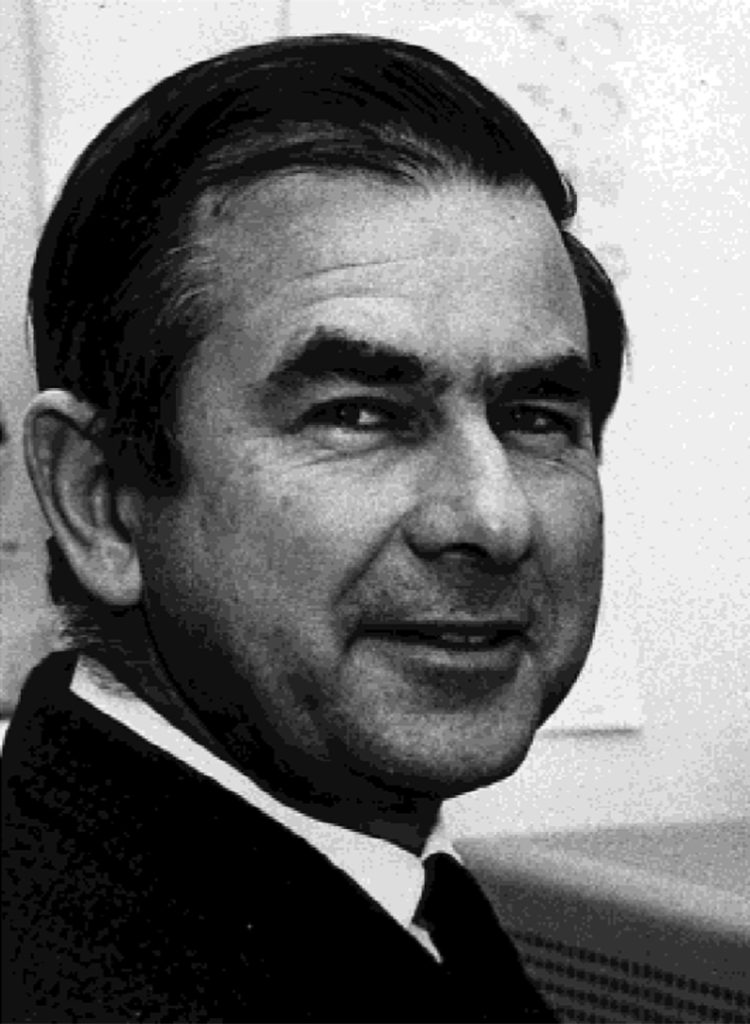
Alan Bird was born 11 February 1928 at Seremban in what were then the Federated Malay States. In 1937 he traveled to Northern Ireland and was enrolled as a boarder in Gloucester House, Enniskillen, which was the Prep School for Portora Royal School,which he subsequently attended. Although his tenure at school was perhaps not a crowning academic achievement, Alan developed a passion for Rugby Union football that stayed with him for his entire life; indeed, one of the last conversations we had together was just after Australia won the Rugby World Cup (it was about 3 a.m. in Australia at the time!).
Alan traveled to Perth in 1946, to live for the first time in Australia, having not seen his parents for nearly ten years. He enrolled as an agricultural science student at the University of Western Australia where, much to the later delight of my sister and me when we were students, he claimed to have failed every first-year subject; academic achievements had fallen victim to rugby. Alan played for the university (and was awarded amuch coveted ‘‘blue’’) and also for the State of Western Australia, including a match against the New Zealand All Blacks. Alan switched disciplines and earned a BSc (Honors) in Zoology in 1952. That year he movedto Adelaide (South Australia) for a Master’s degree, which was granted by the University of Adelaide in 1955. He continued to play rugby for the university and for the State of South Australia but had now developed the skills to balance sport with academic achievement; his thesis on ‘‘The cuticle and exsheathing mechanism of third-stage infectivestrongyle larvae’’ resulted in four publications, one in Nature, one in Science and two in Experimental Parasitology.
Newly married to Jean, Alan went to Scotland in 1954 to work on a PhD, which was awarded by the University of Edinburgh in 1956. During those two years, Alan taught full time as an assistant lecturer in helminthology and nematode physiology at theUniversity of Edinburgh and produced a thesis on ‘‘The nematode cuticle’’ that led to four more papers. It was as a graduate student in Edinburgh that Alan began to use the (then-new) electron microscope, and microscopy remained an essential tool for his entire career. Perhaps surprisingly, his research approach at the time was essentially a biochemical one, and employed the (even newer) technique of electrophoresis to examine cuticle proteins.
The intellectual environment in the Zoology Department at Edinburgh in the mid-1950s was of the highest caliber. Alan’s advisor was Peter Mitchell, FRS and subsequent Nobel Laureate. I remember, when I was becoming interested in molecular biology in the mid-1970s, being made most envious by Alan’s recollections of such things as when Francis (Crick) came to visit. Alan would never admit to having absorbed too much biochemistry (perhaps to avoid argumentswith his biochemist son), but it is abundantly evident that throughout his career he would often turn to biochemistry to assign function to the observations he had made under the microscope; Alan was convinced that understanding structure was merely a tool to elucidate function. Thus, Alan was able to prove that root-knot nematodes produce and secrete cellulase (1975), and also synthesize cytokinin (1980). Throughout his career, Alan was quick to adopt new techniques to study nematodes. I remember as a small boy in 1962 going to visit the laboratory to see the rabbits in which Alan was raising antibodies to rootknot nematode stylet-secretions. In particular, he quickly adopted new methods for microscopic viewing, including Nomarskioptics and techniques such as micro-cytochemistryand micro-autoradiography, and time-lapse cinematography.
Alan and Jean returned to Australia in 1957, and Alan began to work for CSIRO, initially at Merbein, but from 1958 in Adelaide. In 1984 he moved across the car-park from the Division of Horticulture to the Division of Soils where he stayed until he retiredas a Chief Research Scientist in 1993 (although he remained an Honorary Post Retirement Fellow). During this second Australian period he published an additional 114 papers. By any measure, Alan’s scientific output is impressive, both in quality and inquantity. Even more striking is the fact that on 100 of his papers, he was the first or sole author. Significantly, his co-authors often were sabbatical visitors drawn to Alan’s lab: Drs. S. D. Van Gundy (USA, 1965–66); M. A.McClure (USA, 1974–75); V. H. Dropkin(USA, 1976–77); B. S. Stynes (WA, 1977–78); D. L. Riddle (USA, 1983); C. Preston(Wales, 1986); K. A. Wright (Canada, 1986);B. M. Zuckerman (USA, 1988); G. W. Yeates, (New Zealand, 1993). This list, which spans some 30 years, underscores how long Alan was at the forefront of Nematology, and is all the more striking for the diversity of sub disciplines it encompasses (including nematodeecology, nematode-microbe interactions, classical plant-Nematology, ultrastructure,and behavior). Alan’s international collaborations extended further throughhis own sabbatical travels, with stints at the University of Leeds (UK), Saga University (Kyushu, Japan) as a Visiting Professor, andas a Regents’ Lecturer (the first for a Nematologist) at the University of California-Riverside.
Perhaps because he was principally trained as a zoologist, Alan’s thinking was never confined by the artificial disciplinarydistinctions between plant- and animal parasitic nematodes, and he worked on both. He was also very quick to appreciate the power of the free-living nematode, Caenorhabditiselegans, as a general biological model and as a model nematode, and Alan was an invited participant at the 1972 workshop on ‘‘Nematode Genetics, Biochemistry and Behavior’’ at Cold Spring Harbor Laboratories; this meeting was the antecedent ofthe current, biennial International C. elegans meetings. Together with Don Riddle, Alan isolated two of the most widely used wildstrains of C. elegans (AB1 and AB2), which, much to his delight, came from his backyard compost pile. To a large degree, much of the 1991 edition of ‘‘The Structure of Nematodes’’is built around a core of C. elegans information. By adopting this approach, Alan not only solved the problem of how to link disparate bits of knowledge from a wide range of parasitic and free-living nematodes into a coherent and useful whole, but was tacitly establishing C. elegans as the de facto model nematode, even for plant-nematologists!
Later in his career Alan received various awards, including being named a Fellow ofthe Society of Nematologists (1983) and being appointed an Honorary Member of the Helminthological Society of Washington in1997. In 1991, he was awarded the VercoMedal of the Royal Society of South Australia, and was made a Fellow of the Australian Society for Parasitology in 1993. However, the honour that gave Alan the most satisfaction,and the one that perhaps best reflects the merit of his collective research career, occurred in 1975 when he was awarded the degree of DSc from the University of Edinburgh (although of course, this is not an‘‘honorary degree’’ and required another thesis).Shortly before he died, Alan and I completed a chapter on plant nematodes for a more general Nematology text. It struck me as we were writing that it would be possible to produce a fairly comprehensive (if, perhaps,somewhat biased) article citing only papers by Alan Bird. Writing together was a surprisingly enjoyable experience and one that, most sadly, I won’t have the opportunityto do again. Alan is survived by his wifeJean and two children, Mary and me; we three have much to be proud of in Alan.
This appreaciation Alan F Bird was written by his son David Bird.
Journal of Nematology 32(1):1–3. 2000.© The Society of Nematologists 2000.
https://www.ncbi.nlm.nih.gov/pmc/articles/PMC2620423/pdf/1.pdf


